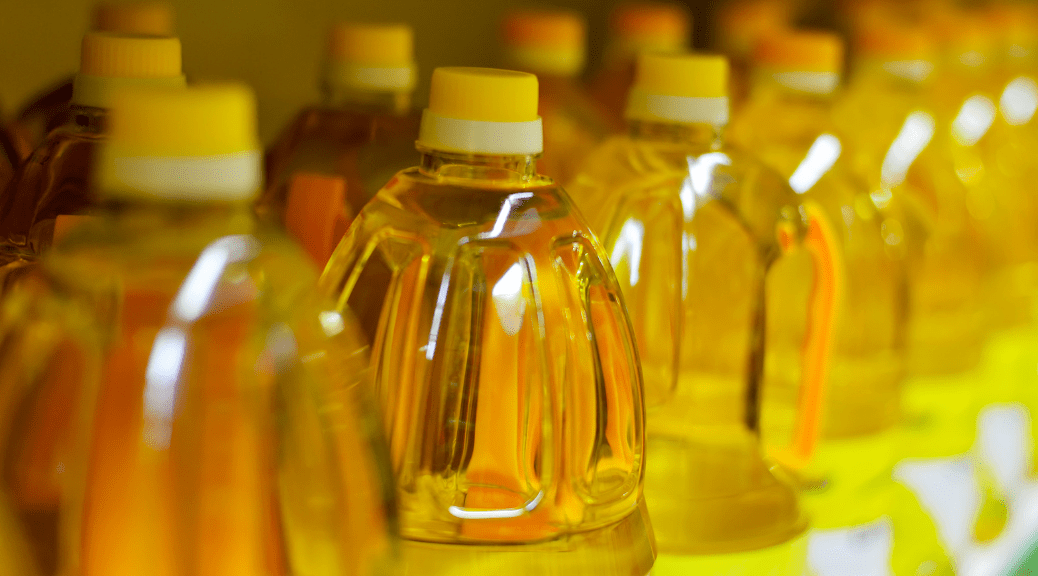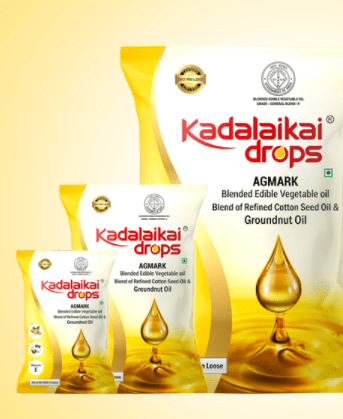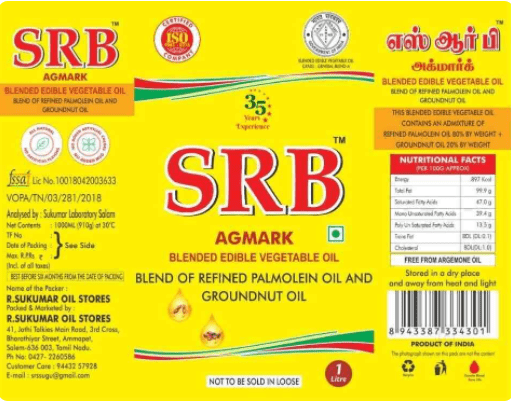Tricks to choose & use your cooking oil the right way

There are different varieties of edible oils in the market these days and picking one for our home is a difficult choice. Most of us tend to base our choices on our established taste preferences. Some of us base our decisions on the healthfulness of an oil and the type of recipes for which we are purchasing the cooking oil. For many Indian recipes, we prefer a cooking oil that does not have a strong flavor of its own. For example, we use olive oil for preparing continental recipes; because this oil adds a unique characteristic flavor to these recipes. In this article, we have discussed the nutritional composition of some commonly consumed edible oils, practices to purchase, store, and handle them in a mindful manner. We also have talked about some food quality certification marks that can help you pick a healthier edible oil.
Richa Pande
Reports say groundnut oil, rapeseed oil(canola), soy oil, cottonseed oil and commercially palm oil are commonly consumed in Indian households. These oils are preferred by many food industries due to the subsidies on palm oil. But do these oils have a healthier nutritional profile, let’s uncover it here:
Nutrition composition of edible oils
All edible oils contain Monounsaturated Fatty Acids (MFAs), Polyunsaturated Fatty Acids (PFAs), and Saturated Fatty Acids (SFAs). The percentage of each varies from oil to oil. Our body requires all three types of fatty acids. PFAs and MFAs are relatively healthier as compared to SFAs, and therefore we must limit their consumption. PFAs can be divided into linoleic (ω-6 fatty acids) and linolenic fatty acids (ω-3 fatty acids). ω-3 fatty acids are also known as essential fats i.e., the body cannot synthesize them metabolically and they must be taken from different dietary sources. Note that PFAs and MFAs (together known as good fats) must always be preferred over SFAs (bad fats). Consumption of more SFAs is not good for your heart health.
| Fats/Oil | Saturated Fatty Acid (SFA) | Mono-unsaturated Fatty Acid (MUFA) | Linoleic Acid (Omega-6 PUFA) | Alpha-Linoleic Acid (Omega-3 PUFA) | N- 6/N-3 ratio |
|---|---|---|---|---|---|
| Mustard | 8 | 70 | 12 | 10 | 1.2:1 |
| Canola | 4 | 62 | 22 | 10 | 2.2:1 |
| Ghee | 65 | 32 | 2 | <1 | 3:1 |
| Soyabean | 15 | 27 | 53 | 5 | 10.6:1 |
| Olive | 13 | 76 | 10 | <0.5 | 20:1 |
| Rice bran | 22 | 41 | 35 | 1.5 | 23:1 |
| Sunflower | 13 | 27 | 60 | <0.5 | 120:1 |
| Safflower | 13 | 17 | 70 | <0.5 | 140:1 |
| Ground nut | 24 | 50 | 25 | <0.5 | 50:1 |
| Table Source- POS Pilot Plant Corporation, Saskatoon Saskatchewan, Canada, June ; National Institute of Nutrition, India |
Calories in edible oils
All edible fats are oils that are calorie-dense. Each gram of both fats and oils has 9 Kcals in it and 1 teaspoon (5ml) contains 45 Kcal. There is an exception to this. One gram of butter has 7 Kcal. This is because of its moisture content.
Antioxidants in edible oils
Many edible vegetable oils contain natural antioxidants like vitamin E also known as tocopherol. Rice bran oil has Oryzanol and Sesame oil contain Sesamol and Sesaminol. These antioxidants have beneficial effects on our health including a reduction in oxidative damage due to aging.
Practice oil rotation for good health
Use cooking oils in rotation to draw health benefits from all different sources.
There are two ways to do this-
- a) Buy two or more edible oils and use them to prepare different recipes in a month. For example, sunflower oil can be used to prepare one meal and groundnut oil or mustard oil can be used for another meal. OR
- b) Use one edible vegetable oil this month to cook recipes at home and next month switch to another cooking oil. OR
- c) Practice blending of oils- One can also blend edible oils at home to derive the health benefits mentioned above.
The followings are some recommended blends-
| Groundnut or Sesame or Rice bran + Mustard Oil |
|---|
| Groundnut or Sesame or Rice bran + Canola Oil |
| Groundnut or Sesame or Rice bran + Soyabean Oil |
| Source-Dietary Guidelines, National Institute of Nutrition |
Ready-to-use blended oils
Blended edible oils are also sold in the market. Sometimes they can also be labelled as “vegetable oil and cooking sprays”.
Laws for ready-to-consume blended edible vegetable oils & quality certifications


Laws: The sale of blended edible vegetable oil and fat spreads in addition to FSSAI regulation is governed by AGMARK. You can pick an oil blend using the AGMARK Logo.
What is the smoke point of cooking oil?
Smoke point is also known as the burning point of the oil. It is the temperature at which you can see bluish smoking from an oil upon heating. If you are cooking a recipe that requires oil to be heated at a high temperature, prefer edible oils that stay stable at higher temperatures. Burnt oil not only ruins the taste of the food but degrade the nutrients in oil and lead to the development of chemicals in it that are harmful to health. Some experts recommend preferring refined oils or ghee to prepare Indian recipes that require deep frying.
EVVO (extra virgin olive oil) Debate
Some health experts argue that EVVO which is one of the healthiest edible oil has a low smoking point and must not be used for cooking recipes at high temperatures. Some advocacy groups argue that there isn’t scientific evidence that supports this notion and that EVVO is suitable for recipes at high temperatures. Their claims have been backed by a few pieces of research but experts claim that these were sponsored work.
Avoid reheating your edible oils
We have the habit of reheating oil for frying which is harmful as it can release more toxic components leading to many diseases. For example, reheating of oil increases trans fatty acids in an oil and its consumption has been found to have negative impacts on health.
Therefore, do not reuse or reheat cooking oil for more than 2-3 times. Use adequate amount of oil for cooking i.e., try to finish it in single-use.
Identifying a fortified edible oil
Many Indians struggle with micronutrient deficiency. As oil is a common household food ingredient, adding micronutrients in it can be an efficient public health strategy to counter micronutrient deficiency.
Edible oils are commonly fortified with vitamin A and Vitamin D. These fortified oils can meet up to 25-30 per cent of our daily recommended dietary allowance for these nutrients. Oil packs fortified with vitamin A & D have a logo that can help us to identify a fortified edible oil.
Tips to use your cooking oil the right way
- Heat oil in amounts as per the food recipe you are preparing. Avoid heating extra oil and again reheating it for next use.
- Store your oil in a cool, dry and dark place to avoid it from becoming rancid.
- Buy oils in small batches and not in larger quantities.
- Always keep oils in airtight containers.
- Edible oils like olive oil, flaxseed oil, etc. can get rancid easily, and therefore they must be stored in a cool, dry and dark environment.
- If Your oil smells bad or different, it means it could have become rancid. Do not consume it as it is not healthy anymore and can even have negative health impacts.
Related
Decoding Cyber Coverage in India: Your Ultimate Guide
In today's technology-driven landscape where digitalization is ubiquitous, companies confront an escalating threat landscape in the form of...
Navigating Insurance Options: Comprehensive Coverage for Diabetics in India
As the prevalence of diabetes continues to rise steadily in India, individuals grappling with this chronic condition encounter myriad challenges,...
Understanding International Travel Insurance
International travel insurance serves as a financial product crafted to shield travellers from unforeseen events and expenses while journeying...


